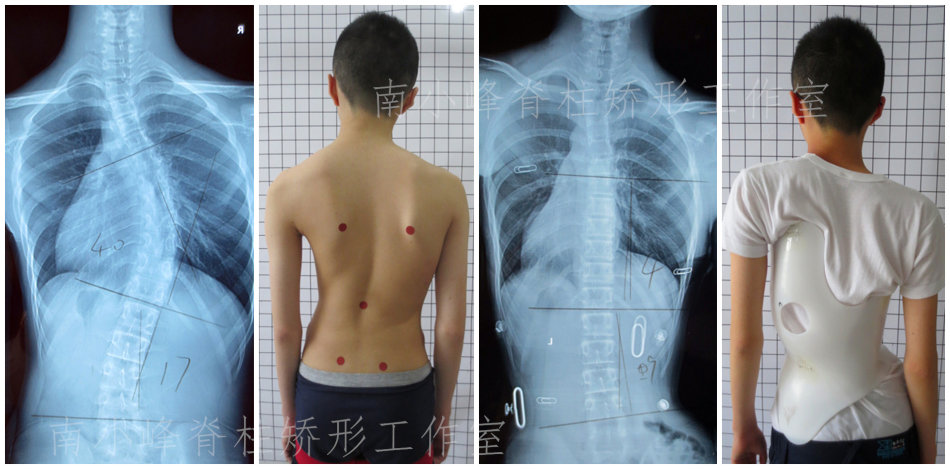The medical applications for 3D printing continue to expand, encompassing numerous areas within both internal and external medicine. For instance we’ve see dozens of different 3D printed medical implants, as well as 3D models used for surgical preparation, and of course we also have seen the vast array of external 3D printed devices such as braces and prostheses.
Last June the Rock Hill, South Carolina-based company, 3D Systems, unveiled their bespoke back braces which were entirely 3D printed and used to correct the curvature of the spine caused by severe scoliosis. Because the braces could be completely customized based on the shape of the patient’s body as well as their corrective needs, they were both more efficient and more comfortable for the patient to wear.
Here we are a little over a year after 3D Systems unveiled their innovative new braces, and now the Chinese are looking into the technology to treat similar conditions which include mild to moderate scoliosis.
The braces currently used in the medical field are clunky, uncomfortable, large and do not allow for the circulation of air. Considering that the braces are supposed to be worn for the majority of the day, these issues often lead children to find way to remove them. Embarrassment is often a reason that kids take their braces off, as they protrude out of clothing, and oftentimes other children poke fun at these abnormalities. 3D printing, however, can overcome almost all of the shortcomings of current corrective braces, and that’s just what Dr. Hans-Rudolf Weiss, MD and Orthopedic Surgeon in Gensingen, Germany has been working on with Chinese researchers at the National Rehabilitation Aids Research Center in Beijing.
They have been able to utilize 3D printing to create customizable braces, which are slimly fit to the patient’s body and possess intricate patterns to increase air flow, while reducing the buildup of heat. The braces are fabricated using thermoplastics, making them incredibly light, but also strong enough to support the realignment of the patient’s back, as well as all the activities that children are used to taking to part in.
Dr. Weiss along with the National Rehabilitation Aids Research Center are continuing to develop these braces even further, making them more robust, lighter, and less noticeable. It’s research like this which continues to surprise many within the medical field, gradually driving additional funding towards the space. Let us know your thoughts on Dr. Weiss’ work and what these braces will ultimately mean for those suffering from Scholiosis. Discuss in the 3D Printed Back Brace forum thread on 3DPB.com
Subscribe to Our Email Newsletter
Stay up-to-date on all the latest news from the 3D printing industry and receive information and offers from third party vendors.
You May Also Like
Creality Begins Selling HALOT-MAGE S: Setting New Standards in Precision 3D Printing
Creality, a leading innovator in consumer-grade 3D printing technology, proudly introduces the HALOT-MAGE S, the latest breakthrough in high-resolution 3D printing. With its cutting-edge features and user-centric design, the HALOT-MAGE...
Farsoon Showcases Comprehensive 3D Printing Solutions, Automation, and More at TCT Asia
This year’s TCT Asia event showcased just how much the Asian additive manufacturing (AM) market has grown, with Eplus3D’s 64-laser metal 3D printer alone acting as a synecdoche for China’s...
Creality Launches Ender-3 V3 Plus: Bigger CoreXZ for Unprecedented Performance
Embracing a journey of innovation and excellence, Creality’s Ender-3 series has established a distinguished path in the field of 3D printing. From the entry-level Ender-3 V3 SE to the feature-rich...
Laser Wars: Eplus3D Unveils Metal 3D Printer with up to 64 Lasers
Now that the laser wars in the powder bed fusion (PBF) space have, for the most part, moved to China, original equipment manufacturers (OEMs) there are in fierce competition. Eplus3D...


































